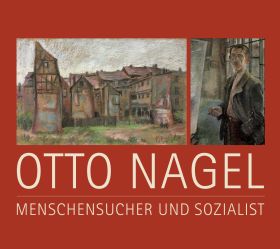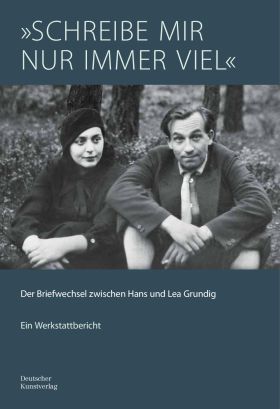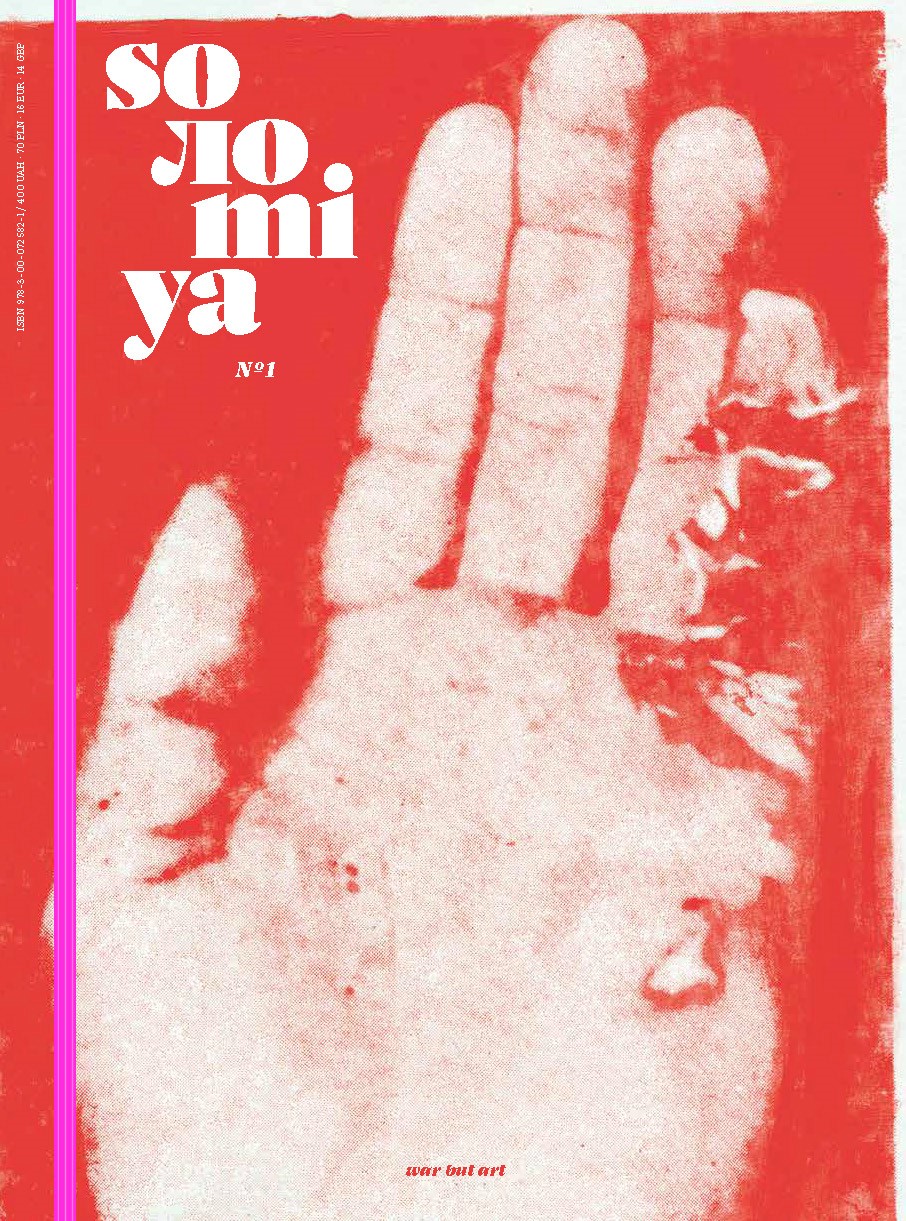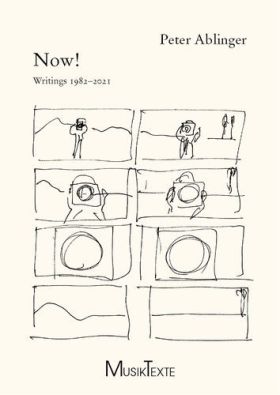All publications

Journal der Künste 19
Published three times a year (German/English), available free of charge
ISSN (Print EN) 2627-2490
The new issue looks at the crisis of public broadcasting as an instrument of democracy, at how art deals with the societal challenges of artificial intelligence, and at the changing role of (art) criticism. Other focal points: the current archive exhibition “Spurensicherung,” photographs by Nan Goldin and Aleš Šteger on artistic freedom in Europe.
To order the print edition: info@adk.de

Into the Open. Nele Hertling – New Spaces for the Arts
Johannes Odenthal im Auftrag der Akademie der Künste
Akademie der Künste, Berlin / Spector Books, Leipzig 2022
German/English, 368 pp.,
200 ill.
ISBN 978-3-95905-557-4
Best.-Nr. 5055
€ 29
A tribute to Nele Hertling with artist dedications, essays and extensive interviews on her childhood under National Socialism, her socialisation between East and West Germany and at the Akademie der Künste. The volume documents a unique success story of international programming, the re-founding of the Hebbel-Theater, the invention of festivals and establishment of cultural-political networks: an untiring commitment to the arts over 60 years.

Hans Scharoun – Architektur auf Papier. Visionen aus vier Jahrzehnten (1909-1945)
Eva-Maria Barkhofen im Auftrag der Akademie der Künste, Berlin
Akademie der Künste, Berlin / Deutscher Kunstverlag GmbH, Berlin/München 2022
German, 324 pp.,
283 ill.
ISBN 978-3-422-98763-0
Best.-Nr. 2078
€ 52
Hans Scharoun is one of the most important German architects of the post-war period. This publication focuses on his free sketches and drawings that were not bound to concrete building projects and were created between 1909 and the end of the Second World War. Up to now, unevaluated sources support the classification of these visionary works, most of which are housed in the Architectural Archives of the Akademie der Künste.

Otto Nagel – Menschensucher und Sozialist
Eckhart J. Gillen im Auftrag der Stadt Eberswalde, in Zusammenarbeit mit der Akademie der Künste, Berlin
Akademie der Künste, Berlin / Stadt Eberswalde, Kulturamt, Eberswalde 2022
German, 116 pp.,
60 ill.
ISBN 978-3-88331-251-4
Best.-Nr. 1207
€ 10
The academic catalogue accompanies the exhibition of paintings and pastels by “Wedding classic” Otto Nagel from the art collection of the Akademie der Künste in the Regionalmuseum Eberswalde. Based on research, especially in the Akademie’s Visual Arts Archive, the authors discover astonishing new facets in the life and work of this outstanding 20th-century realist.

Provenance Research
Akademie der Künste, Berlin 2022
German, 100 pp.,
70 ill.
ISBN 978-3-88331-250-7
Best.-Nr. 1205
€ 9
What impact did the National Socialist dictatorship, the Second World War, and the division of Germany have on the history of ownership of cultural assets? These are the questions addressed by the Provenance Research exhibition. It identifies Nazi loot, illustrates the search and reacquisition of artworks from the Akademie collections that were lost during the Second World War, or the critical reappraisal of the GDR’s efforts to gain possession of valuable art objects.
English translation available as a free download:

»SCHREIBE MIR NUR IMMER VIEL.« Der Briefwechsel zwischen Hans und Lea Grundig. Ein Werkstattbericht
Im Auftrag der Akademie der Künste, Berlin, und der Rosa Luxemburg Stiftung herausgegeben von Kathleen Krenzlin
Akademie der Künste, Berlin / Deutscher Kunstverlag, Berlin/München 2022
German, 240 pp.,
141 ill.
ISBN 978-3-422-80060-1
Best.-Nr. 1206
€ 24
The letters between painter Hans Grundig (1901–1958) and graphic artist Lea Grundig (1906–1977) deal with a Jewish fate, art and love, but also with imprisonment and flight during the National Socialist era, and finally with the return to a destroyed Dresden. This volume of essays opens up the enormous dimension of the correspondence and forms the prelude to the planned edition of the private correspondence currently in progress.

Ismael Ivo. I Believe in the Body
Johannes Odenthal
Spector Books OHG, Leipzig 2022
English, 288 pp.,
372 ill.
ISBN 978-3-95905-624-3
Best.-Nr. 5054-E
€ 32
Born in 1955 in a poor district of São Paulo, Ismael Ivo became one of the world’s most famous and successful dancers. Artistically, he forged close connections with Johann Kresnik, Marcia Haydée, Ushio Amagatsu, George Tabori, Koffi Kôkô and many others. I Believe in the Body brings together interviews from different periods of his creative career, the recollections of those who were with him in Brazil and Europe, visual essays by Anno Wilms and Dieter Blum, and a comprehensive catalogue raisonné. The book is the first publication to portray the life and work of this exceptional artist and person.

Norbert Stück
Das Triadische Ballett (Triadic Ballet) Schlemmer / Bohner / Hespos
Norbert Stück
Selbstverlag, Berlin 2022
German, 68 pp.,
91 ill.
Best.-Nr. 5053
€ 9
In 1977, solo dancer and choreographer Gerhard Bohner (1936–1992) reconstructed all the costumes of Oskar Schlemmerʼs legendary Triadic Ballet for the stage down to the last detail. The picture catalogue lines up the historical images with the new version to tell the triadic costume story.

soлomiya № 1
Vsevolod Kazarin, Andrii Ushytskyi, Sebastian Wells
Self-published / In cooperation with Akademie der Künste, Berlin, and OSTKREUZ – Agentur der Fotografen, Juni 2022
English, 128 pp.,
98 ill.
ISBN 978-3-00-072582-1
Best.-Nr. 6046
out of print
In April 2022, artists from Kyiv and Berlin founded soлomiya in response to Russia’s war against Ukraine. With long photo spreads and reports from everyday wartime life, the magazine aims to promote the visibility of shared democratic values. Being a platform of self-expression for the young generation of creatives from Ukraine, soлomiya is both an itinerant group exhibition and an art object in itself.

Peter Ablinger, Now! Writings 1982–2021
Übers. ins Englische von Meaghan Burke, Akademie der Künste, Berlin, in Zusammenarbeit mit dem Verlag MusikTexte, Köln 2022
English, 320 pp.,
ca. 80 ill.
ISBN 987-3-9813319-8-1
Best.-Nr. 3053
€ 29
“The sounds are not the sounds! They are there to distract the intellect and soothe the senses.” Born in Austria in 1959, Peter Ablinger, who has lived in Berlin since 1982 and is a member of the Akademie der Künste, is not only considered to be an innovative composer but also a brilliant essayist. His writings were published in German in 2016 and are now available in English translation.

Kalender 2023: DDR-Plakate
Weingarten
Akademie der Künste, Berlin / Athesia Kalenderverlag GmbH, Unterhaching 2022
German, 14 pp.,
13 ill.
ISBN 978-3-8400-8358-7
Best.-Nr. 1203
out of print
The best GDR design of the 1950s from the Akademie’s own poster collection will take you through a cheerful 2023. Twelve motifs offer a variety of insights into a colourful advertising world: Under the motto “snug and cosy warmth”, people cuddle up in Konsum clothing to combat everyday worries, Wellaform puts a gloss on hair and a laughing sausage ensures a “Bon appétit!”

Journal der Künste 18
Published three times a year (German/English), available free of charge
ISSN (Print EN) 2627-2490
Pictures from Ukraine by Mila Teshaieva and Johanna-Maria Fritz open issue 18. The focus of the issue is the global ecological crisis: with contributions on the Japanese Edo period as a model for an art of sustainability, on the problematic role of copper, on dealing with climate protection issues through musical interventions, and more. It also includes a travel diary by Jeanine Meerapfel on the trail of Walter Benjamin, an interview with Berlin Biennale curator Kader Attia, drawings by Milein Cosman and a look at the newly opened Gerhard Leo Archive.
To order the print edition: info@adk.de

Poetik der Mitte. Walter Kempowski im literatur- und ideengeschichtlichen Kontext
Tom Kindt, Marcel Lepper und Kai Sina
Wallstein Verlag, Göttingen 2022
German, 232 pp.,
16 ill.
ISBN 978-3-8353-3846-3
Best.-Nr. 4040
€ 26,90
The monumental text collages of Walter Kempowski seek the political and aesthetic middle ground. In them, he brings together narrative tradition and avant-garde. The contributors investigate the literary and historical constellations of the great prose writer. The volume was produced in cooperation with the Akademie der Künste, which preserves the extensive Kempowski archive.

Journal der Künste 17
Published three times a year (German/English), available free of charge ISSN (Print EN) 2627-2490
In addition to an essay by Wilfried Wang on the question of land use, Stephan Suschke’s presentation of the new exhibition on Erich Wonder’s stage designs for Heiner Müller and poems by Meena Kandasamy, dialogues are at the centre of the 17th issue: Kathrin Röggla talks to writer Mohamed Mbougar Sarr about language and resistance, a roundtable discusses the legacy of Paul and Eslanda Robeson, Mark Gergis talks about cassette kiosks in Damascus and his collection of Syrian music in an interview. The focus is also on the opening of the Roger Willemsen Archive and a photo series by Ute Mahler and Werner Mahler. The Carte Blanche goes to JUNGE AKADEMIE fellow and visual artist Sasha Kurmaz.
To order the print edition: info@adk.de